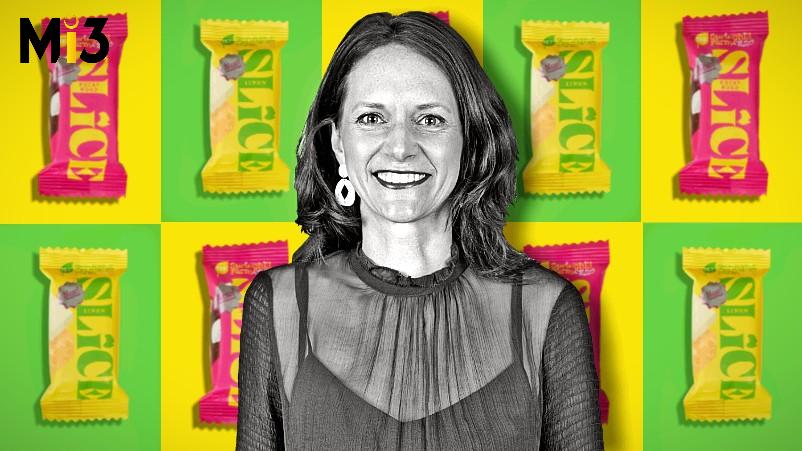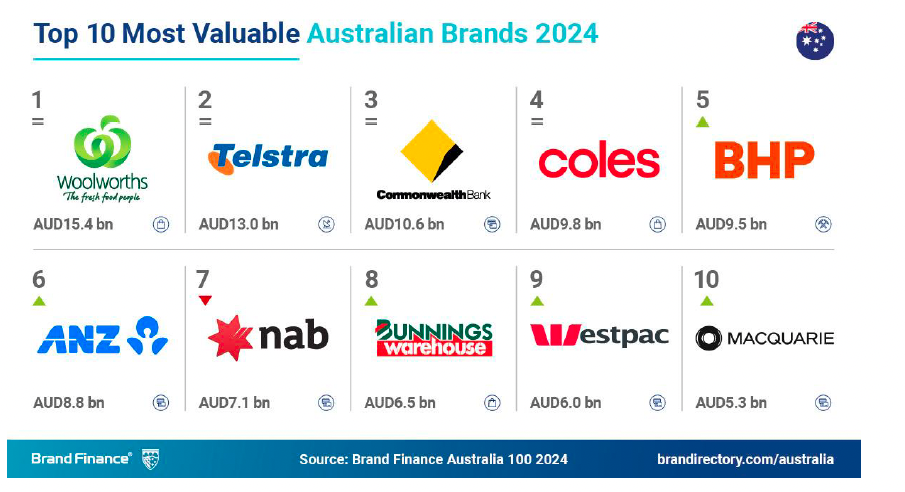‘We’re not manufactured in a focus group, nor a Pinterest board’: What’s fuelling Aussie snacks brand Springhill Farms’ growth plans

It’s not often brand owners have the humility to tell you they made a mistake, but co-owner and chief of Ballarat-based snacking manufacturer Springhill Farm, Fiona Whatley, says launching its Boodles offering as a standalone brand was one of hers.
That’s not because the products lack sufficient consumer appeal to warrant a place on supermarket shelves. The insight behind Boodles is compelling: A 21st century health-conscious reimagining of the classic chocolate crackle to appeal to the growing swathes of consumers spending $1 in every $5 of their food and beverage spend on snacks, but don’t want the guilt associated with it. Now, Boodles are sold in over 5000 stores nationally.
“Sugar is a real driver of guilt at the moment,” Whatley comments. “So if you can enjoy something that is 50 per cent less sugar, that’s great. Subsequently, we’ve brought out the range now to be more than 15 per cent protein to improve that permissibility… the Woolworths confectionary category buyer came on-board completely in full support of the range and we launched eight products into the confectionery category in 2022.”
The mistake for Whatley was in straying from the masthead, Springhill Farms, and attempting to make Boodles a standalone brand endorsed by its parent.
“I think in some ways it was naïve, if I’m honest, to think we could bring another brand into market with a name that was Boodles,” she tells Mi3. “What is a boodle? That’s the question everyone asked and actually it’s a collection of things, which is exactly what a cluster is. But you need a lot of cash to be able to tell that message. So our packaging updates now really are very much around the masterbrand and explaining what the product is inside very clearly.”
Being up against really big competitors in that space is another reason to pull all the chips behind one brand narrative. “What we did is created an endorser brand in Springhill Farm. And really, the power of our storytelling is in the Springhill Farm brand,” she continues. “The product is still called Boodles, because it has equity in the market now, but really, the comms will pivot so we can leverage people who are trying our [Springhill Farm] slices on Qantas flights, after donating blood, or whatever it might be connect to that Boodles brand. That’s the thing we need to be able to do better.”
Springhill Farms is working with In Agency on the brand consolidation work including strategy, identity, packaging and guidelines.
It’s a similar tale with fellow endorser brand attempt, Slice for Busybodies, a 4-star rated kids’ snack complete with innovative, edible movement-themed illustrations. It’s also now being relaunched as a Chocoslice with protein under the Springhill Farm brand and will sit in the Woolworths healthfood aisle. It’s a response to the fact one in four kids in Australia are overweight or obese, fuelled by eating the highest number of calories from snack food in the world.
“It really comes down to being articulate and mindful of the very short amount of time we have to communicate with the consumer,” Whatley comments. “I still love our Busybodies brand and would love to be able to run with it, we did have a lot of plans around that. But we will just strip it back a bit. We ran consumer research around what makes best sense for this product and it’s all the attributes: Its low GI ingredients, for example.
“Going back to that clarity that strategy brings you, it’s been a real ‘aha’ moment in some ways for us.”
I think in some ways it was naïve, if I’m honest, to think we could bring another brand into market with a name that was Boodles. What is a boodle? That’s the question everyone asked and actually it’s a collection of things, which is exactly what a cluster is. But you need a lot of cash to be able to tell that message. So our packaging updates now really are very much around the masterbrand and explaining what the product is inside very clearly.
Owner mentality
Whatley, a sports physiotherapist by trade, didn’t set out to be a manufacturing owner or brand expert. But in taking over the family farm and business, she’s certainly had to become one. Ballarat-based Springhill Farm started 40 years ago as an open-gate farm experience for local kids that commenced with wheat milling and concluded with a homemade muesli slice made by Whatley’s mum. Today, it’s a largely plant-based, manufacturing business running up to 80,000 units of 100+ SKUs across two lines daily, five days a week, overseen by second generation owners, Fiona and James Whatley.
The main emphasis is on better-for-you goods, a SKU list that increasingly caters to gluten-free and other specialty needs. With owned brand lines representing about 40 per cent of total production, Springhill Farm also manufactures for other household brands within Australia. Its point of differentiation is the ability to top the bars it makes, rather than just coat them, with three main lines in use: Bar, portioning and clustering.
Realness is the call Whatley’s crew live and work by, something she admits is both a pro and a con to strive for. “We’re not the really large-scale manufacturer that puts something in at one end and it pops out the other as a form of product. We have found our niche in manufacturing and also as a brand, in being a mid-tier manufacturer,” she says.
“The world ‘agile’ gets used a lot, but we are quite modular in that we can wheel a machine in and wheel a machine out to a line to allow us to pack or top in a different way. So we’re able to create products that really do feel like they’re handmade, with different textures, toppings and those sorts of things. We can think more broadly, which is great, but it can also bring us undone sometimes.”
Food in mouth marketing
Springhill Farm’s primary marketing strategy and approach has been to convert consumers via food services. One of the biggest milestones was a contract to supply snacks to Qantas struck nearly 10 years, a deal it more recently followed up with Virgin Airlines after Covid hit. Overnight, orders quadrupled, Whatley said. Other food service deals in place include with Accor Hotels and Australian blood donation services.
“Food in mouth is the number one thing we can do, and that’s only good for us if the product is great,” Whatley says. “I don’t think you have any more scrutiny on people looking at your packaging and really analysing your product, than when you’re up at 30,000-feet. If it’s a great experience, fantastic, amazing for your brand. If it’s not, then it’s not good for your brand. We do measure that in terms of incoming inquiries and how people hear about us and airlines remain the number one.
“Other areas really high on awareness are accommodation, lifeblood and private hospitals. So again, it’s all of those places where people have been given the products. I always feel a bit humbled if people take the time to say, I ate your product on a plane and loved it, I’m just reaching out to say thanks. That’s a really high bar… we do treasure it a lot.”
But having witnessed how quickly a pandemic can wipe out business, and no longer managing small children of her own, Whatley says it was a no-brainer to start putting more effort into brand and storytelling. “When I talk to people about the story of Springhill Farm, it’s authentic, real and it’s not manufactured in a focus group. People really connect with it. It’s time to really push this brand because there’s a gap in this space we can fill.”
Customer avatars, brand strategy and learning lessons
Building a comprehensive understanding of the business’ differentiation points also ties into the second of those brand strategy ‘aha’ moments Whatley has had in the last 18 months: Knowing exactly who her target customer is. In fact, a short-term fractional CMO, Lachie McKernan, helped her identify this avatar so well, she claims to goosebumps when the strategy document crystallised ‘Sarah’ into being.
‘Sarah’ is a working mum in her 30s, juggling two younger children and experiencing a constant state of ‘whack-a-mole’ as she balances personal and professional life as well as the health and wellbeing of her kids and herself,” Whatley explains. “She’s now at the centre of every product question: What does Sarah want? What makes Sarah’s life better? How do we become part of Sarah’s routine? Really being able to understand Sarah and talk to Sarah just makes things a whole lot better and clearer.
“It’s something I’ve always felt was right, because it resonated with me and all my friends. I see all my friends who are professional, working mums with this juggle they’re trying to perform, and it feels very relatable. And I guess in a lot of ways, I’ve always been frustrated by the perfectness of what I see in other brands. It doesn’t serve to inspire – in fact, I think that approach does the opposite for lots of people. We’re about being aspirational, but real.”
Authenticity and realness are words that keep coming up for us from a brand point of view. We talk about our brand as not a Pinterest board. That’s in a lot of ways the opposite to what we see brands portraying at the moment – that life is perfect. I have four kids – life doesn’t look like for me.
The fusion of pharmacy and food
There’s absolutely no doubt Springhill Farm’s trajectory is hooked onto a shooting rocket in health and wellbeing as well as healthier snacking. According to Circana research, one-third of US consumers prioritise wellness in food and beverage choices as part of growing emphasis on physical, mental and social wellbeing. These consumers have buying power exceeding US$1.1 trillion. Local figures suggest Aussies spend $5239 per person per year on wellness, making us sixth globally per capita for wellness expenditure.
“Health is an interesting term as it’s different for everyone,” Whatley comments. “For me, health isn’t in any way obsessive, it’s about balance – it’s about going for a run but enjoying wine with your friends. It’s about doing all of those things that allow you to enjoy the things you want. Sarah is not an obsessive health person, but she does care about what she eats, what goes into her products, what her kids eat.”
Which feeds into what Whatley sees as the dominant trend in food right now: Protein. That’s layering on top of Springhill Farms’ baseline narrative of largely plant-based products, no synthetic ingredients, and often gluten free. Another growing specialisation Whatley points to is snacks for different demographics; think functional snacks for older people through adaptogens pitched at helping with bone health or eyesight.
“It’s this fusion between pharmacy and food world, and how you can bring those two things together,” she comments. “That’s an interesting trend. Looking at brands like Blackmores, Swisse does give an insight as to where they’re heading and what they’re seeing people seek. Because people are going to them for a problem they’re trying to fix. So how you can translate that into an Australian product is interesting.”
Snacking meanwhile, accounts for more than 20 per cent of global food and beverage sales, led by consumers under 40 across all major regions. According to Circana data, healthier snacks dominate early dayparts, while indulgent and savoury items tend to come out in the afternoon and evening. In ANZ, bold flavours and new formats are a key part of the decision-making process.
“Authenticity and realness are words that keep coming up for us from a brand point of view. We talk about our brand as not a Pinterest board. That’s in a lot of ways the opposite to what we see brands portraying at the moment – that life is perfect. I have four kids – life doesn’t look like for me,” Whatley says. “Maybe I’m failing, or perhaps people are portraying something that isn’t real. There is an authenticity and realness to say it’s ok to hide in the cupboard and eat something and to have your little timeout moment.”
Building community influence
As to where Springhill Farm’s marketing goes next, Whatley flags a new digital agency, Overport, whose tasks include figuring out an influencer engagement strategy. Springhill’s creative partner is In Agency.
“We’ve been really clear on naming people to be very real,” she says. “Aspirational real, but not preachy or superior – that more qualified nutritionist, dietitian, or whatever that might look like. Certainly I think there is a role for that and it’s certainly an interesting space as people become more expert in that space. You need to still be able to be real in terms of some of the realities around manufacturing and what’s required. And at the end of the day, a price point needs to be hit for products to sell as well, particularly in this day and age with pricing pressures.”





